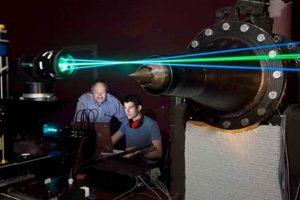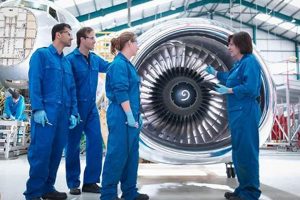An academic background in aerospace engineering equips individuals with a robust skillset applicable to a wide array of professional pursuits. The curriculum emphasizes analytical problem-solving, mathematical modeling, and a deep understanding of physics principles. This foundational knowledge base is readily transferable to diverse roles beyond the traditional aerospace sector.
The value of an aerospace engineering education lies in its ability to cultivate critical thinking and innovation. Historically, advancements in flight and space exploration have stemmed from the ingenuity of engineers in this field. The rigor of the training fosters a capacity for tackling complex challenges, a highly sought-after attribute across various industries. These acquired abilities are applicable not only to the aerospace sector, but also to areas like automotive engineering, renewable energy, and even financial modeling.
Given the breadth of the skillset developed, the opportunities available to graduates are substantial. The following sections will explore specific career paths, industries, and potential roles accessible with this specialized educational background. These examples demonstrate the versatility and adaptability afforded by this degree.
Maximizing the potential of an aerospace engineering degree requires strategic planning and informed decision-making. The following tips provide guidance for individuals seeking to leverage their education effectively.
Tip 1: Emphasize Transferable Skills: Highlight analytical abilities, problem-solving skills, and mathematical proficiency when applying for roles outside of traditional aerospace. These skills are valuable across numerous sectors.
Tip 2: Consider Specialization: Focusing on a specific area during academic studies, such as propulsion systems, structural analysis, or aerodynamics, can enhance expertise and marketability within that niche.
Tip 3: Pursue Internships Strategically: Seek internship opportunities in diverse industries to gain exposure to various applications of engineering principles. This allows for informed career decisions.
Tip 4: Develop Strong Communication Skills: Effective communication is crucial for conveying complex technical information to both technical and non-technical audiences. Practicing presentation and writing skills is essential.
Tip 5: Network Actively: Attend industry conferences, join professional organizations (e.g., AIAA), and connect with alumni to expand professional contacts and explore potential opportunities.
Tip 6: Obtain Relevant Certifications: Certain certifications, such as those related to project management or systems engineering, can enhance credibility and demonstrate proficiency in specific skill areas.
Tip 7: Stay Current with Industry Trends: The aerospace field is constantly evolving. Maintaining awareness of emerging technologies and advancements through ongoing learning is crucial for long-term career success.
Applying these recommendations will increase the likelihood of securing fulfilling and impactful career opportunities. Proactive engagement and continuous skill development are essential for maximizing the return on investment in an aerospace engineering education.
The subsequent section will summarize the main points discussed and offer a concluding perspective on the diverse possibilities that exist with this advanced technical degree.
1. Design
Design, as a core function attainable with an aerospace engineering degree, represents the practical application of theoretical knowledge to create tangible solutions. It encompasses the entire lifecycle of aerospace systems, from initial concept to final production, requiring a thorough understanding of aerodynamics, materials science, propulsion, and control systems. The ability to design effective and efficient aerospace vehicles and components is a direct consequence of the comprehensive education received, making design a key aspect of what individuals with this degree can accomplish.
The role of design extends beyond the drawing board. It necessitates a rigorous process involving computational modeling, simulation, and prototyping. For example, designing a new aircraft wing requires detailed aerodynamic analysis to optimize lift and minimize drag. This process directly influences fuel efficiency and overall performance. Similarly, designing spacecraft structures demands careful consideration of weight minimization and radiation shielding to ensure mission success in harsh environments. These are only possible with an aerospace engineering background.
In summary, design serves as a primary avenue for aerospace engineers to contribute to technological advancement. The challenges associated with creating innovative aerospace systems drive continuous learning and development, ensuring that professionals with this degree remain at the forefront of engineering innovation. The capacity to design is not merely a skill, but a fundamental characteristic of the expertise conferred by an aerospace engineering education.
2. Analysis
Analysis, as a crucial element attainable with an aerospace engineering degree, involves applying mathematical and computational tools to understand and predict the behavior of aerospace systems. This skillset is essential for ensuring safety, optimizing performance, and driving innovation within the industry. The ability to perform rigorous analysis is a defining characteristic of the capabilities developed during an aerospace engineering education.
- Structural Analysis
Structural analysis involves evaluating the integrity and stability of aircraft and spacecraft components under various loading conditions. Engineers use finite element analysis (FEA) software to simulate stress, strain, and deformation, ensuring that structures can withstand the forces experienced during flight or space travel. For example, structural analysis is critical in designing the wings of an aircraft to prevent failure due to aerodynamic forces. This application directly reflects how the analytical skills gained through this degree can prevent catastrophic events and ensure structural reliability.
- Aerodynamic Analysis
Aerodynamic analysis focuses on understanding the flow of air around aircraft and spacecraft. Computational fluid dynamics (CFD) simulations are used to predict lift, drag, and other aerodynamic characteristics. This analysis is essential for optimizing aircraft designs for fuel efficiency and maneuverability. For instance, aerospace engineers use CFD to analyze the flow field around a new airfoil design, enabling them to refine the shape for optimal performance at different speeds and altitudes. The ability to conduct thorough aerodynamic analysis is paramount to designing efficient and high-performing aircraft, directly related to the opportunities available to graduates.
- Thermal Analysis
Thermal analysis examines the temperature distribution within aerospace systems and components. This is particularly critical for spacecraft operating in extreme temperature environments. Engineers use thermal analysis to design cooling systems, select appropriate materials, and ensure that sensitive electronic components do not overheat. An example includes designing heat shields for spacecraft re-entering the Earth’s atmosphere, where temperatures can reach thousands of degrees Celsius. Thermal analysis ensures the survival of the spacecraft and its occupants, highlighting the life-critical applications of analytical skills.
- Systems Analysis
Systems analysis involves evaluating the performance and reliability of complex aerospace systems, such as flight control systems or propulsion systems. This requires a holistic understanding of how different components interact and how system-level parameters affect overall performance. For example, systems analysis can be used to assess the impact of different engine configurations on aircraft fuel consumption and range. A systems-level perspective ensures optimized and efficient operation, underscoring the comprehensive problem-solving capabilities afforded by an aerospace engineering degree.
These examples illustrate the diverse applications of analytical skills acquired through an aerospace engineering education. The ability to conduct structural, aerodynamic, thermal, and systems analysis is crucial for designing safe, efficient, and innovative aerospace systems. Mastering these analytical tools and techniques significantly broadens the spectrum of opportunities accessible to those with this advanced technical degree.
3. Research
Research, when considered within the context of aerospace engineering, constitutes a fundamental pathway for graduates seeking to advance the field. The pursuit of novel technologies, improved materials, and enhanced understanding of flight mechanics directly stems from rigorous research endeavors. Individuals with an aerospace engineering degree are uniquely positioned to contribute to these advancements, driving innovation and pushing the boundaries of what is currently achievable in both aeronautics and astronautics. The connection is causal: the degree provides the foundational knowledge, and research provides the application and advancement.
The significance of research to the field is evident in numerous examples. The development of composite materials for aircraft structures, resulting in lighter and more fuel-efficient designs, originates from extensive materials research. Similarly, advancements in propulsion systems, such as the development of more efficient jet engines and innovative rocket propulsion concepts, are direct results of dedicated research efforts. Furthermore, the exploration of hypersonic flight and the development of technologies to enable space colonization are ongoing research areas critical to the future of aerospace engineering. Aerospace engineers play essential roles in these projects.
In conclusion, research is not merely an optional activity for those holding an aerospace engineering degree; it is a vital component for the progression of the discipline. By engaging in research, graduates contribute to the body of knowledge, develop cutting-edge technologies, and shape the future of aerospace. The practical significance of this understanding lies in recognizing that a strong research focus is essential for both personal career growth and the overall advancement of the aerospace industry.
4. Management
Management, within the framework of an aerospace engineering degree, represents a significant career trajectory that leverages technical expertise alongside leadership skills. It involves overseeing projects, teams, and resources to achieve specific objectives within the aerospace sector. This function is critical for translating engineering concepts into tangible products and services, ensuring efficiency and success in complex operations. An aerospace engineering background provides a solid foundation for understanding the technical intricacies involved, thus enabling effective management decisions.
- Project Management
Project management entails planning, executing, and closing aerospace projects, such as the development of a new satellite or the design of an aircraft component. Aerospace engineers in project management roles are responsible for defining project scope, managing budgets, and coordinating teams of engineers and technicians. For example, an aerospace engineer managing the development of a new satellite propulsion system would oversee the design, testing, and integration of the system, ensuring that it meets performance requirements and stays within budget. This requires both technical acumen and leadership capabilities, both facets fostered by an aerospace engineering education.
- Engineering Management
Engineering management involves overseeing engineering teams and departments within aerospace organizations. These managers are responsible for setting technical direction, allocating resources, and ensuring that engineering projects align with business goals. For example, an engineering manager in an aircraft manufacturing company might oversee the design and testing of new aircraft models, ensuring that they meet safety regulations and performance specifications. Their technical background enables them to provide guidance and mentorship to engineering teams, driving innovation and efficiency.
- Program Management
Program management encompasses the management of multiple related projects or programs within an aerospace organization. Program managers are responsible for coordinating resources, managing risks, and ensuring that the overall program achieves its strategic objectives. For instance, a program manager in a space agency might oversee multiple satellite missions, coordinating the design, launch, and operation of each satellite to achieve scientific or commercial goals. The ability to manage complex programs requires a deep understanding of both technical and business aspects of aerospace engineering.
- Operations Management
Operations management focuses on optimizing the efficiency and effectiveness of aerospace manufacturing and service operations. This involves managing production processes, supply chains, and maintenance activities. For example, an operations manager in an aircraft maintenance facility might oversee the scheduling and execution of aircraft maintenance checks, ensuring that aircraft are returned to service safely and efficiently. This requires a strong understanding of engineering principles, as well as logistics and supply chain management.
The diverse facets of management within the aerospace sector showcase the breadth of opportunities available to individuals with an aerospace engineering degree. These roles require a blend of technical expertise, leadership skills, and business acumen. By effectively managing projects, teams, and resources, aerospace engineers contribute to the success of organizations and the advancement of the industry. The ability to ascend into management positions is a testament to the value and versatility of an aerospace engineering education.
5. Testing
Testing, as a core competency linked to an aerospace engineering degree, ensures the reliability and performance of aerospace systems through rigorous evaluation and validation. The curriculum equips graduates with the knowledge and skills to design, execute, and analyze tests on components, systems, and entire vehicles, both in simulated and real-world environments. This activity is crucial to verifying that designs meet specifications, identifying potential flaws, and mitigating risks before deployment. The ability to conduct effective testing is a direct outcome of the engineering principles learned and applied.
The importance of testing is exemplified in several aerospace applications. Wind tunnel testing is used extensively to analyze the aerodynamic characteristics of aircraft and spacecraft designs, providing critical data for optimizing performance and ensuring stability. Material testing verifies the strength and durability of aerospace materials under extreme conditions, ensuring structural integrity. Flight testing, the ultimate validation phase, assesses the performance of aircraft in real-world operating conditions. Failures during testing, while undesirable, provide invaluable insights for design improvements and risk mitigation. For example, the Space Shuttle program relied heavily on component and system testing to identify and address potential failure modes, albeit not always successfully, highlighting the necessity of comprehensive testing protocols.
In conclusion, testing represents a fundamental function for individuals with aerospace engineering degrees, underpinning safety, performance, and innovation within the industry. The ability to design, execute, and analyze tests is not merely a technical skill but a responsibility inherent to the profession. Comprehensive testing protocols are crucial for minimizing risks, ensuring the reliability of aerospace systems, and advancing the boundaries of aerospace technology. The practical significance of this understanding lies in recognizing that robust testing is indispensable for both the successful development and safe operation of aerospace vehicles and systems.
6. Consulting
Consulting, as a career path accessible with an aerospace engineering degree, provides a platform to leverage technical expertise across diverse projects and organizations. This role involves providing specialized advice and solutions to clients facing complex challenges within the aerospace sector and related industries. The ability to analyze problems, develop innovative strategies, and implement effective solutions stems directly from the analytical and problem-solving skills cultivated during an aerospace engineering education. The link is clear: the degree provides the foundational knowledge, and consulting provides the application across various contexts.
The significance of consulting in aerospace is exemplified by various scenarios. Aerospace engineers working as consultants might assist companies in optimizing aircraft design for fuel efficiency, developing new propulsion systems, or improving manufacturing processes. Consulting firms also provide expertise in areas such as regulatory compliance, risk management, and market analysis. For instance, a consultant might help an airline develop a strategy to reduce fuel consumption by analyzing flight routes, optimizing aircraft maintenance schedules, and implementing fuel-saving technologies. Another example could involve assisting a space launch company in conducting risk assessments and developing safety protocols for launch operations. The consulting role allows for a broad application of aerospace engineering skills, rather than confinement to a single company or project.
In conclusion, consulting represents a versatile and impactful career option for individuals holding an aerospace engineering degree. By offering specialized expertise and strategic advice, consultants contribute to the success of organizations and the advancement of the aerospace industry. The ability to apply engineering principles to solve real-world problems, coupled with strong communication and interpersonal skills, makes consulting a valuable and rewarding path. The practical significance of this understanding lies in recognizing that consulting provides an opportunity to broaden one’s professional experience and contribute to multiple projects and organizations, furthering both career growth and the overall advancement of the field.
7. Education
Education, considered as a career pursuit stemming from an aerospace engineering degree, offers opportunities to disseminate knowledge, mentor future engineers, and contribute to the intellectual development of the field. This path directly leverages the deep understanding of aerospace principles gained through academic study. The ability to translate complex concepts into accessible instruction, and to inspire students through practical examples and innovative teaching methods, underscores the value of this career choice. Formal or informal education allows aerospace engineering degree holders to shape the next generation.
The impact of education is evident in multiple ways. Professors at universities engage in cutting-edge research while simultaneously instructing undergraduate and graduate students. This symbiotic relationship ensures that the curriculum remains relevant and reflects the latest advancements in aerospace technology. Instructors at vocational schools and community colleges prepare students for technical roles in the aerospace industry, equipping them with the practical skills needed to succeed in manufacturing, maintenance, and testing. Furthermore, aerospace engineers contribute to informal education through outreach programs, workshops, and online resources, promoting STEM education and inspiring the next generation of innovators. By focusing on new educational methodologies and technology, students can be better prepared for aerospace engineering degrees.
In summary, education provides a fulfilling and impactful career path for individuals with an aerospace engineering degree. By sharing their knowledge and expertise, educators shape the minds of future engineers and contribute to the long-term health and vitality of the aerospace industry. Recognizing education as a viable and valuable option expands the possibilities associated with this advanced degree, ensuring that the intellectual capital within the field continues to grow and evolve.
Frequently Asked Questions
This section addresses common inquiries regarding career opportunities for individuals holding an aerospace engineering degree, providing clarity and insights into diverse professional options.
Question 1: Does an aerospace engineering degree limit career options solely to the aerospace industry?
No, while the degree provides specialized knowledge for the aerospace sector, the analytical, problem-solving, and mathematical skills acquired are highly transferable. Graduates find opportunities in various industries, including automotive, energy, and finance.
Question 2: What are the primary differences between aeronautical and astronautical engineering roles?
Aeronautical engineering focuses on aircraft operating within Earth’s atmosphere, while astronautical engineering concentrates on spacecraft and systems designed for operation in space. Job duties and responsibilities often reflect these fundamental distinctions.
Question 3: Are advanced degrees (Master’s or Ph.D.) necessary for career advancement in aerospace engineering?
While not always mandatory, advanced degrees can significantly enhance career prospects, particularly for research-oriented positions or specialized roles requiring in-depth knowledge. Employers often value advanced degrees for technical leadership positions.
Question 4: What role does software proficiency play in aerospace engineering careers?
Proficiency in industry-standard software for CAD, simulation, and analysis is crucial. Familiarity with tools like MATLAB, ANSYS, and computational fluid dynamics (CFD) software is highly valued by employers and contributes to job performance.
Question 5: Is prior military experience beneficial for securing employment in aerospace engineering?
Military experience, particularly in aviation or related technical fields, can be advantageous. The structured training, discipline, and experience with complex systems often align well with the demands of aerospace engineering roles.
Question 6: What is the anticipated job outlook for aerospace engineers in the coming years?
The job outlook for aerospace engineers is projected to grow, driven by increasing demand for air travel, advancements in space exploration, and the development of new technologies. Specific growth rates vary depending on economic conditions and government funding priorities.
In summary, an aerospace engineering degree offers a diverse range of career possibilities. Strategic planning, skill development, and continuous learning are crucial for maximizing career potential within this dynamic field.
The subsequent section will offer concluding thoughts on the multifaceted value of this advanced technical education.
Concluding Remarks
The preceding discussion has illuminated the breadth of career paths accessible with an aerospace engineering degree. From design and analysis to research, management, testing, consulting, and education, the opportunities are diverse and impactful. The foundational knowledge and skill sets cultivated during academic training provide a robust platform for professional success across multiple industries and sectors. This degree not only facilitates entry into the traditional aerospace field, but also equips graduates with adaptable expertise applicable to a wide range of technical challenges.
Considering the evolving landscape of technology and engineering, the demand for individuals with strong analytical and problem-solving capabilities will continue to rise. Those who strategically leverage their aerospace engineering education, coupled with continuous learning and professional development, are poised to make significant contributions to both the aerospace industry and beyond. The future holds considerable potential for innovation and advancement, and those equipped with this advanced technical education are well-positioned to shape that future.


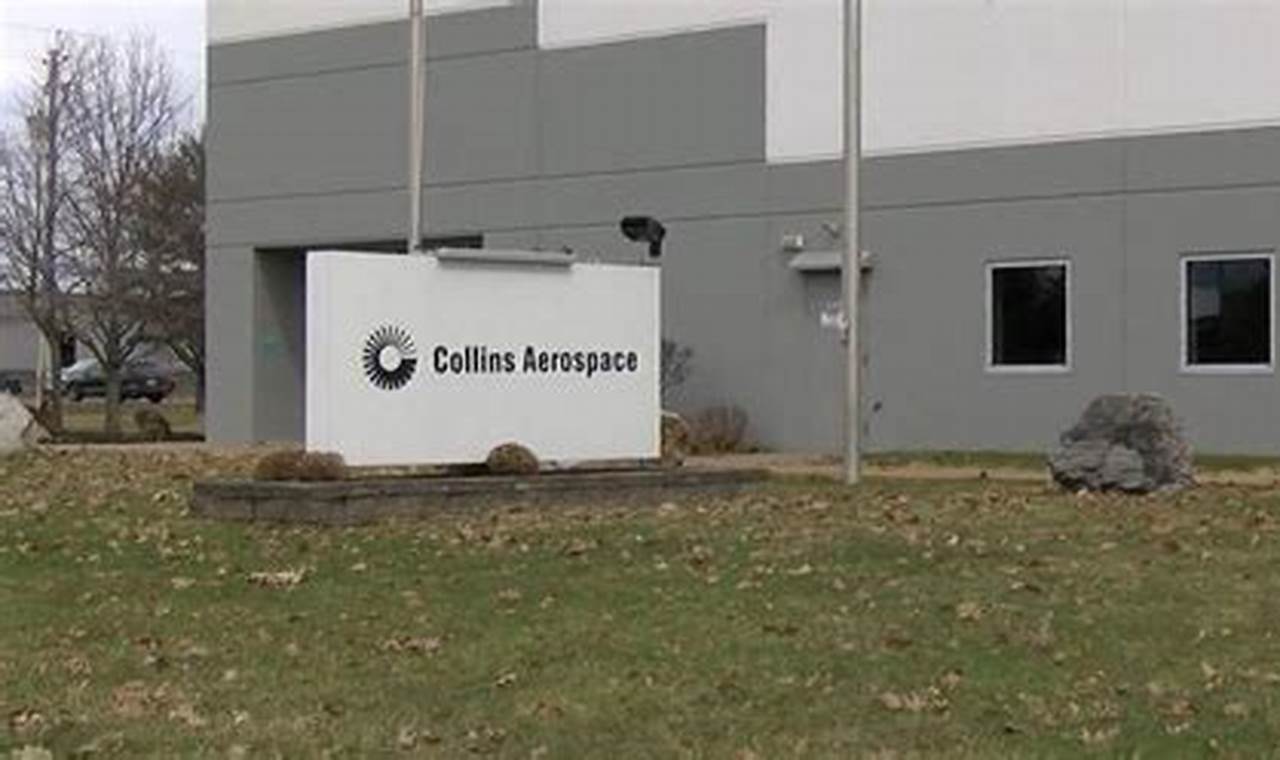
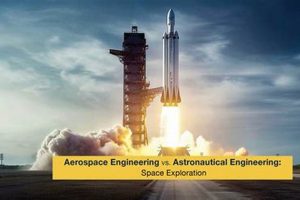
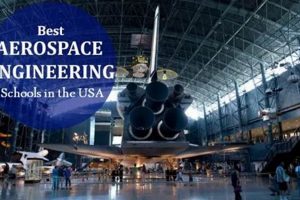
![Top Aerospace Engineering Colleges in Florida [2024] Innovating the Future of Flight with Reliable Aviation Solutions Top Aerospace Engineering Colleges in Florida [2024] | Innovating the Future of Flight with Reliable Aviation Solutions](https://mixaerospace.com/wp-content/uploads/2025/12/th-913-300x200.jpg)
